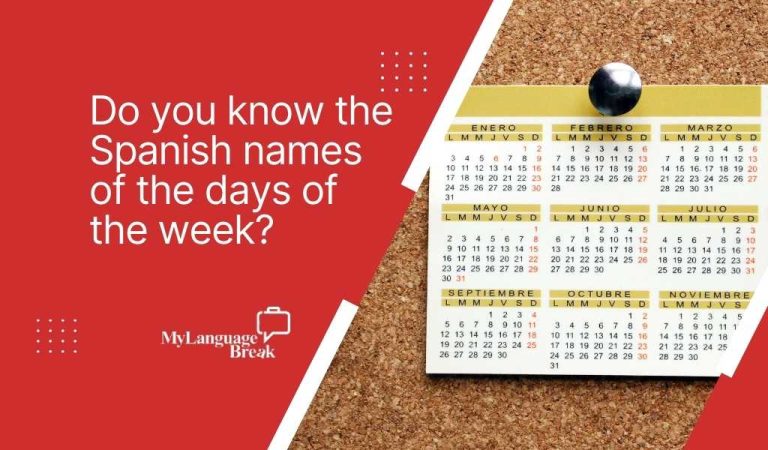Do you want to learn Spanish irregular verbs? If so, you’ve come to the right place! We will discuss the most common Spanish irregular verbs. Learning these verbs will help you improve your fluency and comprehension of the Spanish language. Let’s get started!
Spanish Irregular Verbs: The Ultimate Guide
It’s important to become familiar with Spanish irregular verbs if you want to be able to speak the language fluently. These verbs don’t follow the regular conjugation rules, so it can be tricky to remember how to use them correctly. In this article, we will look specifically at the most common irregular verbs in Spanish.
Some of the most common Spanish irregular verbs include: tener (to have), venir (to come), poner (to put), decir (to say), and hacer (to do/make). These verbs are used frequently in conversation, so it’s important to know how to use them correctly.
The easiest way to remember how to conjugate these verbs is to practice using them regularly. You can also find verb conjugation charts online, or in textbooks or dictionaries. With a little practice, you’ll be able to use Spanish irregular verbs like a pro!
Different Verbs, Same Rules
Regular and irregular verbs are important to understand when learning a new language. In English, regular verbs follow a simple pattern, whereas irregular verbs do not. In Spanish, regular verbs follow a basic pattern, but there are also many irregular exceptions. It is important to be aware of both types of verbs when studying a new language, as they will appear in different forms and contexts. For example, the regular verb “to speak” is conjugated as “hablar” in the present tense, but the irregular verb “to be” is conjugated as “ser”. Being familiar with both types of verbs will help you to better understand and use the language.
The 10 Most Common Spanish Irregular Verbs
Source: @SpeakSpanishFaster – How To Master IRREGULAR VERBS In Spanish!!
- ser – “to be”
- haber – auxiliary “to be/to have”
- estar – “to be”
- tener – “to have”
- ir – “to go”
- saber – “to know”
- dar – “to give”
- hacer – “to make”
- poder – “to can/to be able to”
- decir – “to say”
Spanish Verb Conjugations: The Basics
The stem of a regular verb in Spanish is the part you get when you remove the infinitive suffix (-ar, -er, or -ir) from the infinitive form. To conjugate a regular verb in Spanish, all you do is remove the infinitive suffix and add an ending (-o or -as). For example, the stem of estar (to be) is est, the stem of tener (to have) is ten, and the stem of ir (to go) is ir. Saber (to know) has no infinitive suffix, so the stem is sab. Dar (to give) has no infinitive suffix either, so the stem is dar. Hacer (to make) has no infinitive suffix either, so the stem is hacer. Poder (to be able to) has no infinitive suffix either, so the stem is pod. Decir (to say) has no infinitive suffix either, so the stem is dec.
The present-tense endings of cerrar follow a pattern where the stem vowel changes in four out of six forms. The vowel in the stem of a stem-changing verb only changes when it’s stressed, which is typically in the yo, tú, él/ella and ellos/ellas forms. This is because the stress falls on the second-to-last syllable in those forms, and the stem vowel changes to match the vowel in that syllable. Understanding why this is the case can help you better understand accents and word stress in Spanish.
The Three Types of Stem-Changing Verbs in Spanish
1. Regular stem-Changing Verbs
The regular stem-changing verb “poder” follows a predictable pattern when conjugated. In the infinitive form, it is “podar”. The first-person singular present tense form is “puedo”. The third-person singular preterite tense form is “pudo”.
2. Irregular stem-changing verbs
Irregular stem-changing verbs can be difficult to remember, but with a little practice, they will become second nature. Some of the most common stem-changing verbs are: dormir (to sleep), morir (to die), and pedir (to request/ask for). To form the stem change in the present tense, you must first determine the stem of the verb. This is done by removing the -ir ending from the infinitive form and then adding either -y or -é depending on whether the stem ends in a vowel or consonant. For example, the stem of dormir is dorm-, morir is mori-, and pedir is pedi-.
Once you have determined the stem of the verb, you simply add the appropriate ending to match the subject pronoun. For example, if I wanted to say “I sleep”, I would say “durmí”. If you want to say “he sleeps”, you would say “duerme”. It’s as easy as that! With a little practice, you’ll be able to conjugate any irregular stem-changing verb like a pro.
3. Reflexive stem-changing verbs
Reflexive stem-changing verbs are used when the subject is acting on itself. This can be seen in verbs like reflected (reflecting oneself), vibrated (vibrating oneself), and exaggerated (exaggerating oneself). These reflexive verbs show how the subject is in control of the action, and it is often done for emphasis or to create a sense of intimacy.
Categories of Stem-Changing Verbs in Spanish
The e to ie verb change
There are many verbs in Spanish which follow a specific pattern when conjugated. For example, cerrar changes the e to an ie. This is also true for querer, pensar, perder and empezar. It’s important to be aware of these patterns when conjugating verbs, as it can make a big difference in terms of pronunciation.
Verbs that Change an o to a ue
The verbs listed above will change an o to a ue in the present tense. This is done to maintain pronunciation. For example, colgar (“to hang”) will become colgue in the present tense.
Verbs that change an e to an i
There is a third category of stem-changing verbs that change an e to an i. An example of this type of verb is corregir (“to correct”). This change in the stem can occur in different parts of the verb, depending on the conjugation. For the -ir ending, the e changes to an i in all forms except for the nosotros and vosotros forms, which remain unchanged. The e also changes to an i in the -ar and -er endings when the verb is conjugated in the second person singular or plural.
The Irregular “Yo” Forms of Spanish Verbs
There are a small number of Spanish verbs with an irregular “yo” form. The first-person singular form is irregular; all other forms are either regular or have a stem change. Examples of these verbs include decir (“to say”), hacer (“to do/make”), and poner (“to put/place”).
Irregularity in verb conjugations can be tricky for Spanish learners, but with practice, it becomes easier to remember the correct forms. It is important to become familiar with as many of these verbs as possible, as they are commonly used in Spanish conversation and writing.
Irregular “yo” form with no stem change
The verbs conocer, dar, hacer, poner, salir, traer and ver all have irregular yo forms with no stem change. For each of these verbs the first person singular is conjugated as follows: yo conozco, tú conoces. The verb oír also has an irregular yo form with no stem change: yo oigo. The verb saber has an irregular yo form which uses a different root in the first person singular: yo sé. The verb ir has an irregular yo form which changes to ‘y-‘ in the first person singular: voy. The verb estar also has an irregular yo form which uses a different root in the first person singular and undergoes a spelling change : estoy. This is again not considered to bestem change but rather just another spelling variation.
Irregular “yo” form with a stem change
The irregular “yo” form of decir is digo. This means that when I say something, it is in the present tense. The irregular “yo” form of tener is tengo. This means that I have something. The irregular “yo” form of venir is vengo. This means that I come.
Conclusion
That’s it! You now know all there is to know about Spanish irregular verbs. With a little bit of practice, you’ll have them down in no time. Remember, the best way to become fluent in a language is to practice as often as possible with native speakers.





